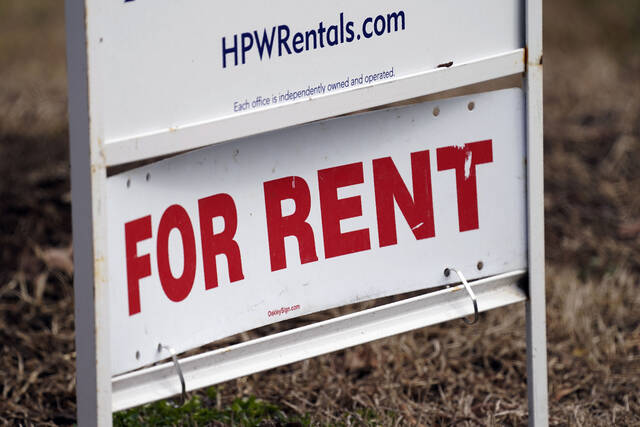Editorial: Rental assistance needs better messaging
There’s a problem with rental assistance in Pennsylvania.
It doesn’t seem to be going where it’s needed.
Since the onset of the coronavirus pandemic in 2020, evictions and rental issues have been a concern as people have worried about making sure they had a place to live while they were sheltering in place or while their jobs were in limbo. Rental assistance has been a part of multiple relief packages passed by Congress.
In Pennsylvania, that has meant millions of dollars intended to keep low-income renters from losing their homes.
That’s great. But it also has meant that while cities like Philadelphia run through their allocated funds, others sit on piles of money with few applications.
In Westmoreland County, more than $36 million was received to help residents in need. Less than a quarter of that has been distributed. In Allegheny County, more than $84 million has been given out.
County commissioners appointed Union Mission of Latrobe as the agency in charge of managing the rental assistance program. Executive Director Dan Carney says many people don’t even know the lifeline is available.
A Spotlight PA article in December pointed to a number of factors complicating the efforts, including overlapping distributions from the state and directly from the federal government in some cases. Overall, so little of the money was distributed, the U.S. Treasury had the state submit a corrective plan.
Unsurprisingly, Pennsylvania once again tripped over its own messaging. A Department of Labor and Industry post on Facebook about the program was called out for coming after a deadline had closed.
While Allegheny’s program is ending March 31, Westmoreland still has availability through September.
County officials believe that while many counties have money they can’t distribute because they don’t have people meeting the 80% of median income threshold, Westmoreland could have as many as 57% of its 35,000 rental households qualify. They are working harder to get the message out.
But the state should step up as part of that effort. While putting the money in the hands of counties to distribute puts it closer to the renters, the state could be offering more unified messaging and better support for the counties to find the people who need help.
Remove the ads from your TribLIVE reading experience but still support the journalists who create the content with TribLIVE Ad-Free.

